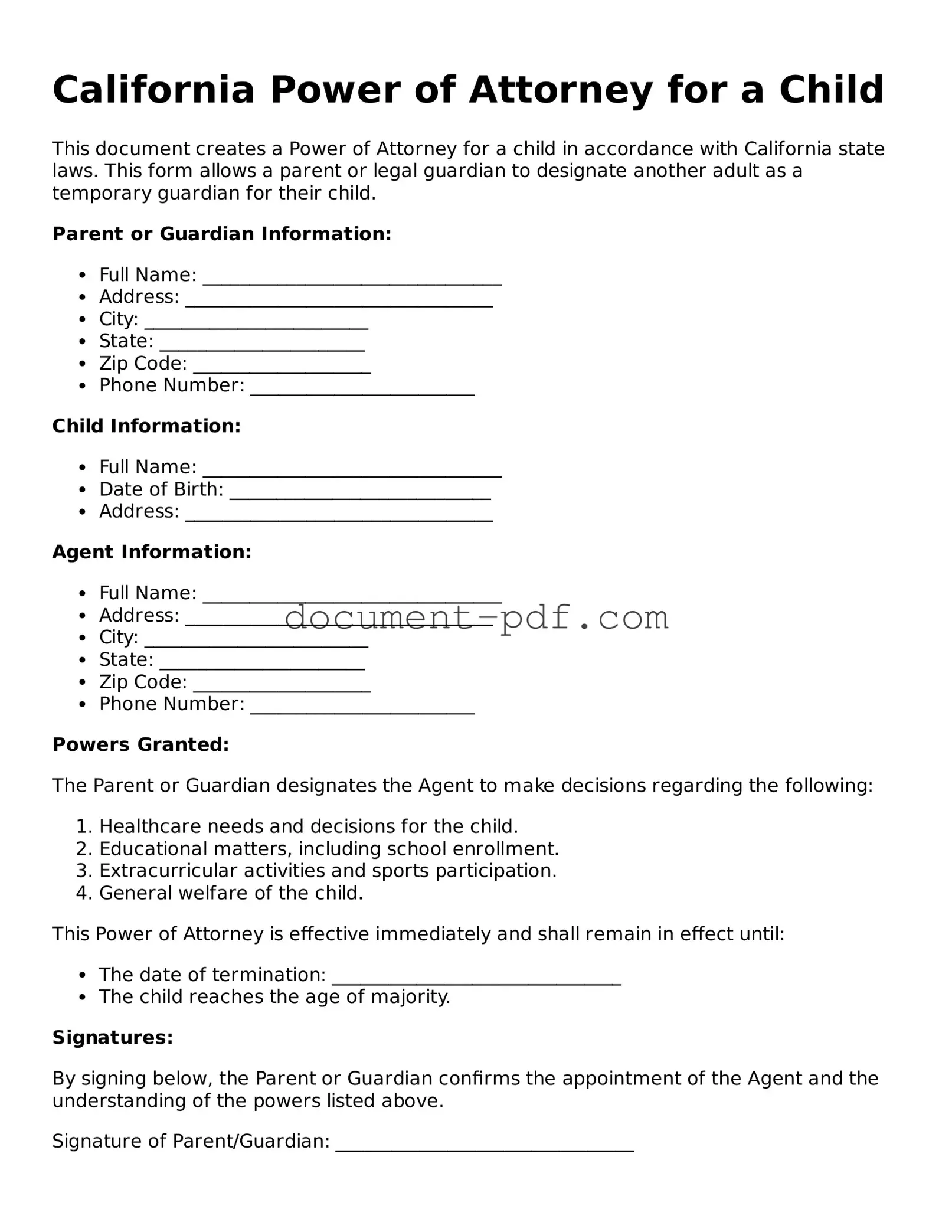California Power of Attorney for a Child
This document creates a Power of Attorney for a child in accordance with California state laws. This form allows a parent or legal guardian to designate another adult as a temporary guardian for their child.
Parent or Guardian Information:
- Full Name: ________________________________
- Address: _________________________________
- City: ________________________
- State: ______________________
- Zip Code: ___________________
- Phone Number: ________________________
Child Information:
- Full Name: ________________________________
- Date of Birth: ____________________________
- Address: _________________________________
Agent Information:
- Full Name: ________________________________
- Address: _________________________________
- City: ________________________
- State: ______________________
- Zip Code: ___________________
- Phone Number: ________________________
Powers Granted:
The Parent or Guardian designates the Agent to make decisions regarding the following:
- Healthcare needs and decisions for the child.
- Educational matters, including school enrollment.
- Extracurricular activities and sports participation.
- General welfare of the child.
This Power of Attorney is effective immediately and shall remain in effect until:
- The date of termination: _______________________________
- The child reaches the age of majority.
Signatures:
By signing below, the Parent or Guardian confirms the appointment of the Agent and the understanding of the powers listed above.
Signature of Parent/Guardian: ________________________________
Date: ________________
Signature of Agent: ________________________________
Date: ________________
